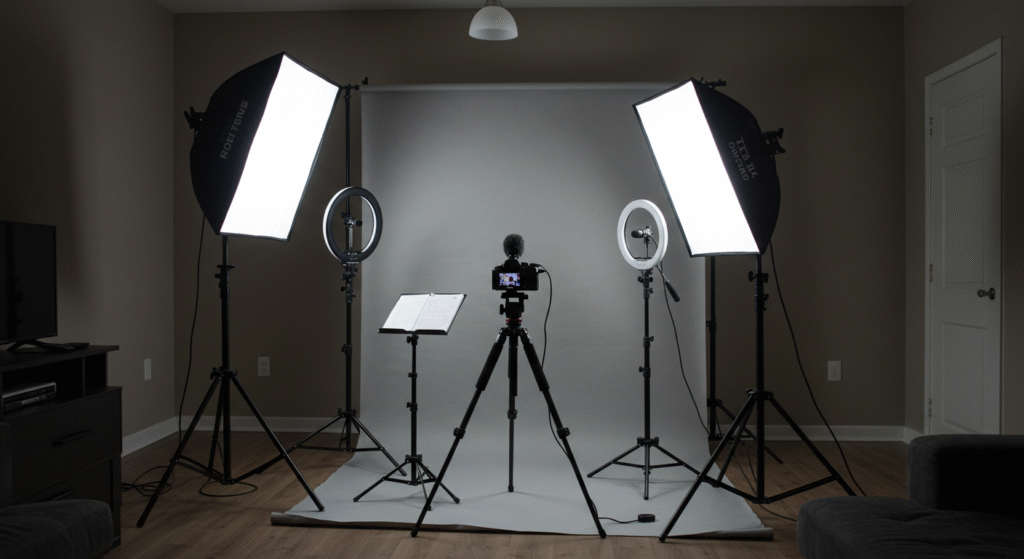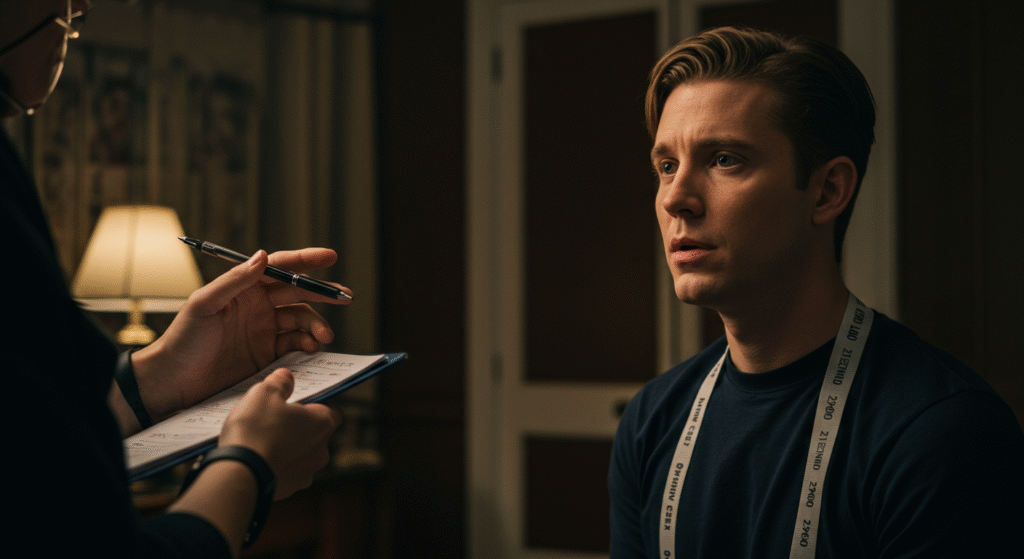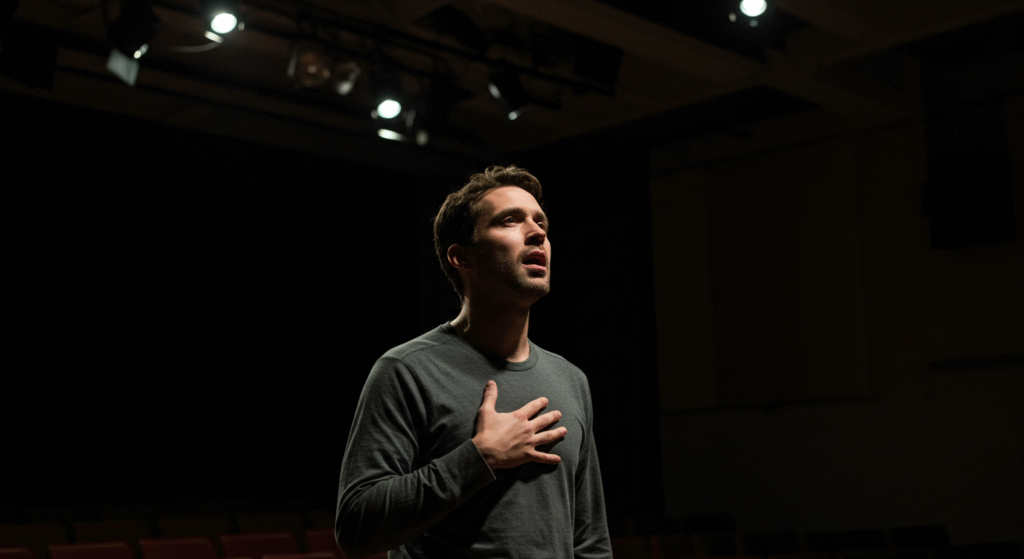Auditions are the gatekeepers of an actor’s career. Two minutes in front of a casting director can open doors to long-running series—or end with a polite “Thank you” and silence. While no tip can guarantee a booking, there are repeatable habits that make you memorable for all the right reasons.
Below, you’ll find hard-won insights from casting associates, agents, and working actors. Each strategy is explored in two conversational paragraphs, followed by quick bullet points for easy recall.
1. Do Detective-Level Research Before You Submit

Casting teams notice when an actor submits blindly. Start by evaluating the project’s tone and the creators’ past work. A procedural from Wolf Entertainment calls for a grounded, realistic delivery, while a half-hour single-cam comedy for ABC Signature leans toward heightened timing. Dig into recent episodes, press releases, or the show runner’s social media to uncover story arcs and stylistic quirks.
This homework pays off when choosing sides or monologues: you’ll instinctively match pacing, stakes, and humor to the show’s DNA. Extras like dialect accuracy or wardrobe suggestions become informed choices—not random guesses that could jar the panel.
- Scan IMDb for producers’ previous credits.
- Watch at least one episode (or pilot) before taping.
- Note genre keywords in the breakdown: “deadpan,” “hyper-real,” “period.”
2. Treat Your Slate as Your First Line of Dialogue

Slates are not elevator pitches; they’re tests of authenticity. Casting directors decide within seconds whether your natural essence aligns with the character brief. Look directly into the lens, relax your brow, and share your name, height, and representation with the same ease you’d greet a new colleague.
Avoid over-smiling or salesy energy. Think of the slate as a micro-scene where the objective is to communicate reliability and self-awareness. If the role requires a specific accent or physical skill, flag it here to pre-empt later questions.
- Stand or sit in neutral posture—no swaying.
- Keep to 7–10 seconds unless extra details requested.
- End with a centered breath to show poise.
3. Select Material That Reveals Contrast

Casting teams aren’t just checking whether you can act; they’re evaluating range and adaptability. Choose scenes that pivot emotionally or shift power dynamics mid-beat. A monologue that begins defiant and lands vulnerable shows more dimension than 60 seconds of constant rage.
For self-tapes, read the full scene, not just your lines, so you understand subtext and can surprise the viewer with active listening. When a callback asks for a second piece, select something tonally different—drama versus comedy, contemporary versus classical—to prove breadth without flooding them with clips.
- Favor scenes with clear emotional turns.
- If allowed two takes, vary one major choice.
- Trim long speeches; 60–90 seconds is a sweet spot.
4. Rehearse With Adaptive Beats, Not Memorized Gestures

Over-rehearsed line readings flatten spontaneity. Instead, break the script into beats anchored by active verbs (“to provoke,” “to seduce,” “to deflate”). Practice shifting tactics on cue cards rather than drilling exact intonation. This keeps you nimble when casting redirects mid-room.
Use a rehearsal partner or voice memo playback for lines; focus on breathing through objective changes rather than “hitting marks.” That way, if a casting director asks for “less intensity” or “more urgency,” you can adjust the verb—not panic over lost muscle memory.
- Color-code beats and corresponding actions.
- Record two alternate tactics per beat.
- Run scenes once “messy” to test flexibility.
5. Build a Pro-Level Self-Tape Setup at Home

In 2025, self-tapes often replace first-round rooms. Invest in a neutral backdrop (soft gray or muted blue), two softbox lights at 45° angles, a lapel or shotgun mic, and a tripod at eye height. Test framing so your chest and a touch of shoulder space appear; casting wants to read micro-expressions, not ceiling fans.
Shoot at 1080p, 24–30 fps; higher resolution strains file sizes without adding value. Label files with Project_Role_Name_LastName.mp4 to prove you’re detail-oriented. Finally, export a clean slate + scene in one file unless separate clips are requested.
- Avoid windows as key light; clouds ruin consistency.
- Check audio levels—clipping is a deal-breaker.
- Keep file size under 200 MB when possible.
6. Nail the Room Entrance (or Zoom Greeting)

If you score an in-person callback, your audition starts the second you step through the door. Enter with relaxed shoulders, offer a genuine “Good morning,” and wait for instructions. Don’t launch into backstory about traffic; casting is juggling schedules.
For virtuals, test Wi-Fi strength, audio, and framing 30 minutes early. Open with a calm greeting and confirm they can see and hear you clearly—then move straight into slate or questions. Demonstrating technological competence eases the panel’s stress and frames you as a low-maintenance hire.
- Keep bags and coffee outside the room if possible.
- Make eye contact with everyone on the panel, not just reader.
- Center yourself for a breath before the first line.
7. Listen Like It’s Live Theater
Actors often half-listen to the reader, then deliver lines as pre-packaged monologues. Casting directors spot this instantly. Treat every audition as a living dialogue: respond to pauses, adjust volume, and allow genuine reactions. If the reader is monotone, use that as fuel to pursue your objective harder.
This attentiveness shows you’ll be directable on set, where co-stars and blocking shift daily. It also increases the chance of playful chemistry—a quality that frequently overrides pedigree when decisions are tight.
- Maintain soft eye contact near, not at, the lens.
- Allow natural overlap if scene pace calls for it.
- React in silence when your character would think.
8. Take Direction as Collaboration, Not Correction

Many actors panic when given a note mid-audition, fearing they “did it wrong.” Directors are actually testing compatibility: Can you pivot quickly? Nod, clarify briefly if needed (“So, lean more into sarcasm on that second beat?”), then commit fully on the next take. Avoid apologizing or layering new choices awkwardly over old habits.
If feedback conflicts with your prep, honor the new request 100 percent. You may prefer your first version, but showing flexibility beats clinging to a rigid choice. After all, your booked performance will be shaped by the creative team.
- Listen through the entire note before responding.
- Paraphrase instructions in your own words to confirm.
- Execute decisively; half-measures read as uncertainty.
9. Let the Button Breathe—Then Exit Clean

The final moment of a scene, often called the “button,” lingers in a director’s memory. Hold the emotional aftermath for a full heartbeat before dropping character. This micro-pause signals confidence and gives editors a natural cut point.
After delivering the button, transition smoothly back to neutral, thank the panel once, and collect belongings calmly. Resist debriefing your performance or asking when they’ll decide. Professional closure leaves space for them to absorb what they just saw.
- Practice the button in rehearsal: inhale, exhale, release.
- Smile genuinely but briefly on exit.
- Close the door softly; noise disrupts workflow.
10. Follow Up Without Becoming Forgettable or Annoying

A concise, courteous email from your agent (or self-sent if unrepresented) within 24 hours can reinforce your professionalism. Thank them for their time, attach the same headshot/resume combo, and express excitement for the project. Avoid recounting mistakes or adding “just one more link.”
Then let it go. Casting timetables vary wildly, and power-emailing every three days strains goodwill. Use the downtime to sharpen the next audition rather than obsessing over this one.
- Subject line: “Thank You – ROLE NAME – PROJECT TITLE.”
- Keep body under 100 words.
- Archive sent message; move focus forward.
Final Beat
Impressing a casting director is less about brilliance in a single line and more about showcasing reliability, curiosity, and agility from first click to final thank-you. Master these insider strategies, and every audition—booked or not—becomes a networking investment that compounds over time.
The goal isn’t just to win a role; it’s to earn a reputation that keeps the invitations coming. Break legs, book rooms, and remember: your best audition is the one where the creative team imagines working with you every day on set.

